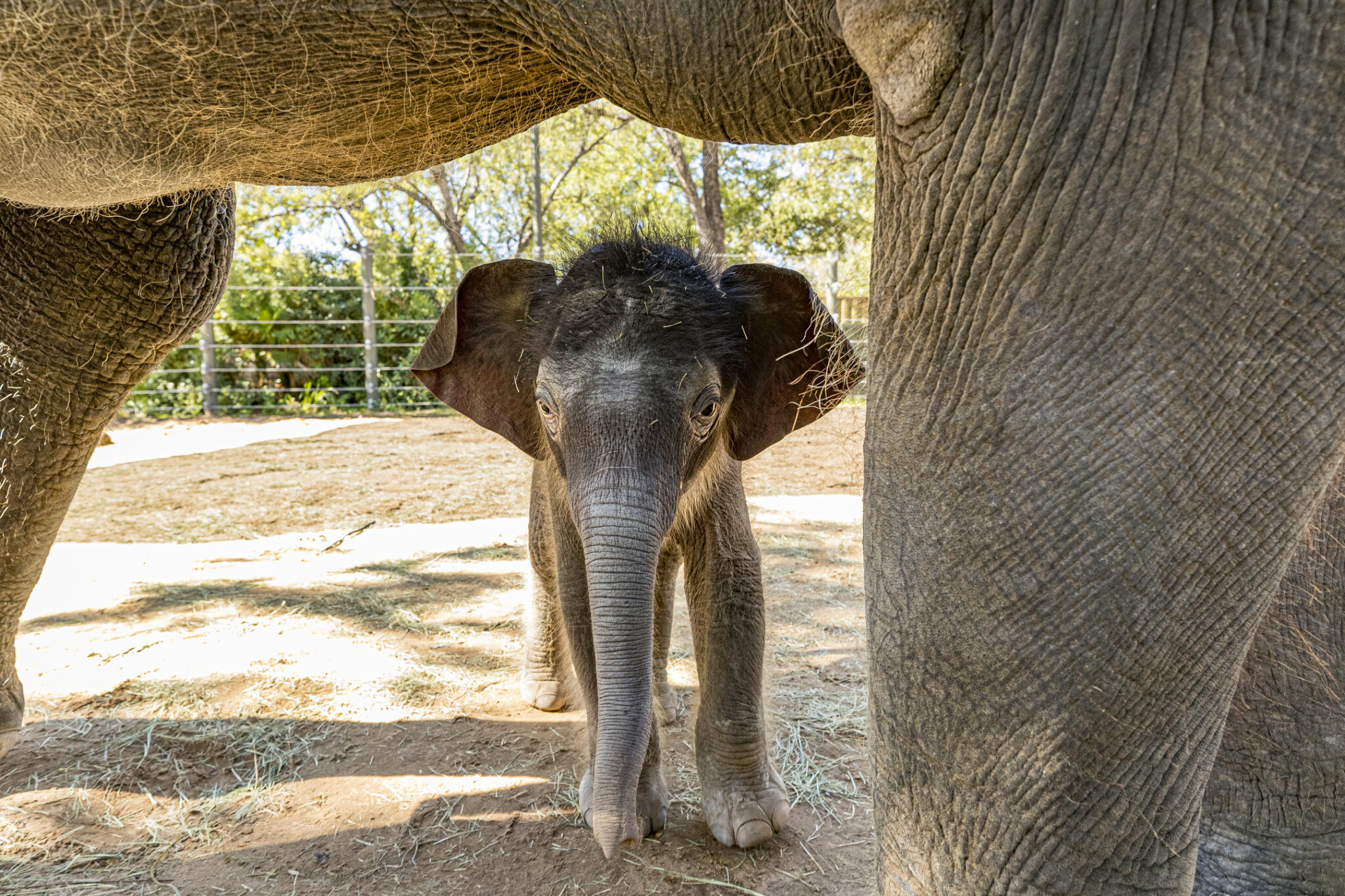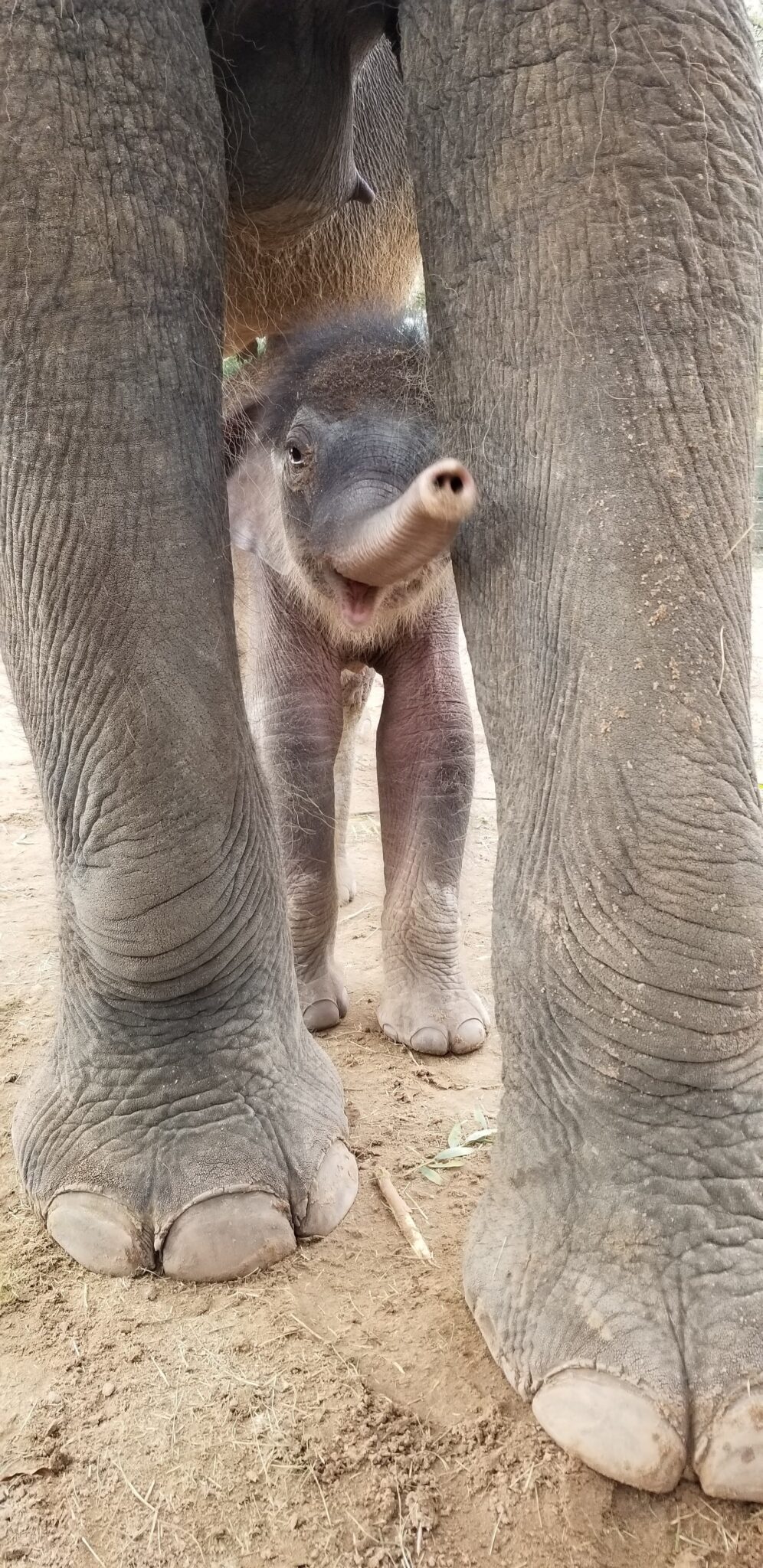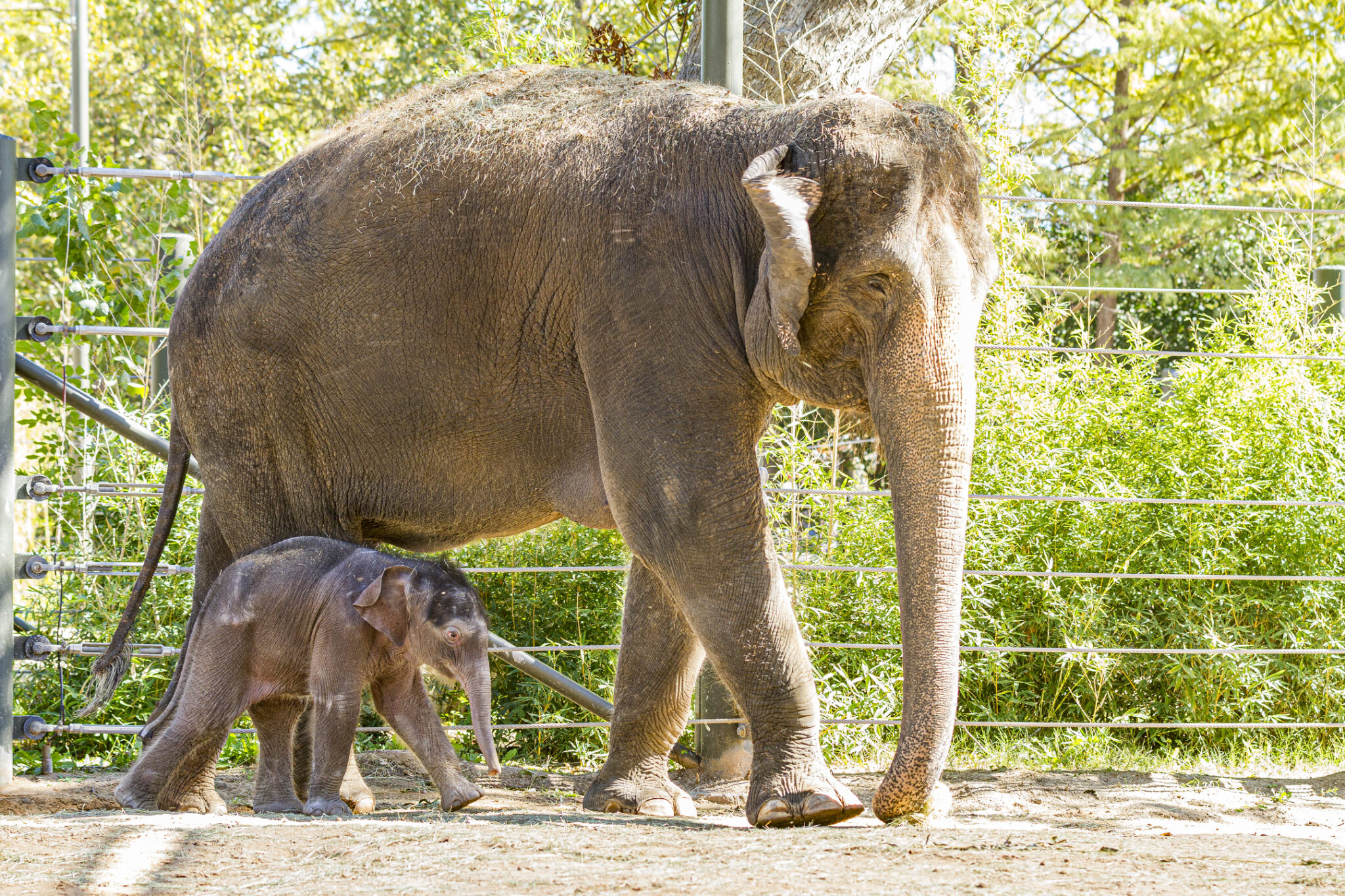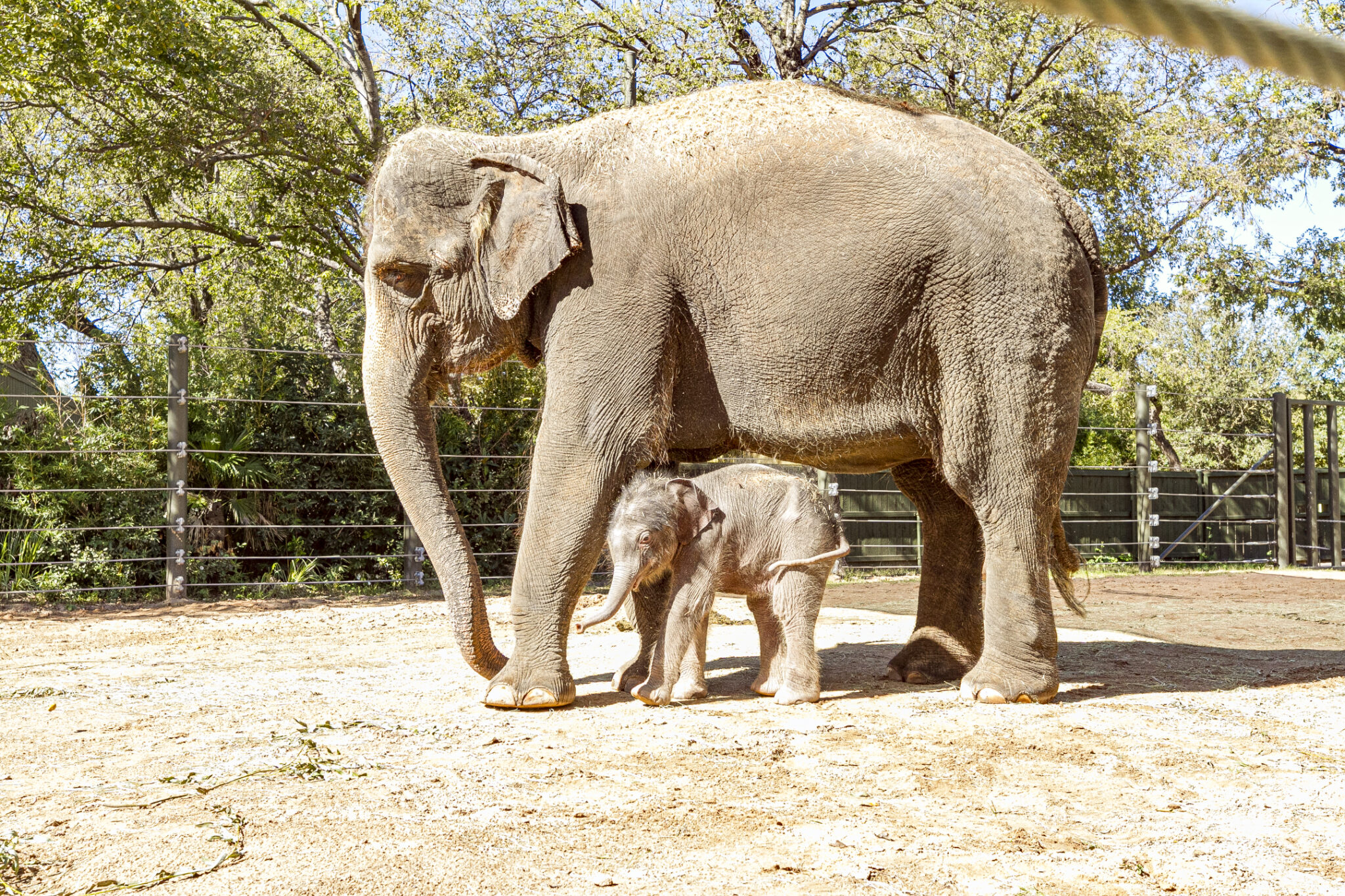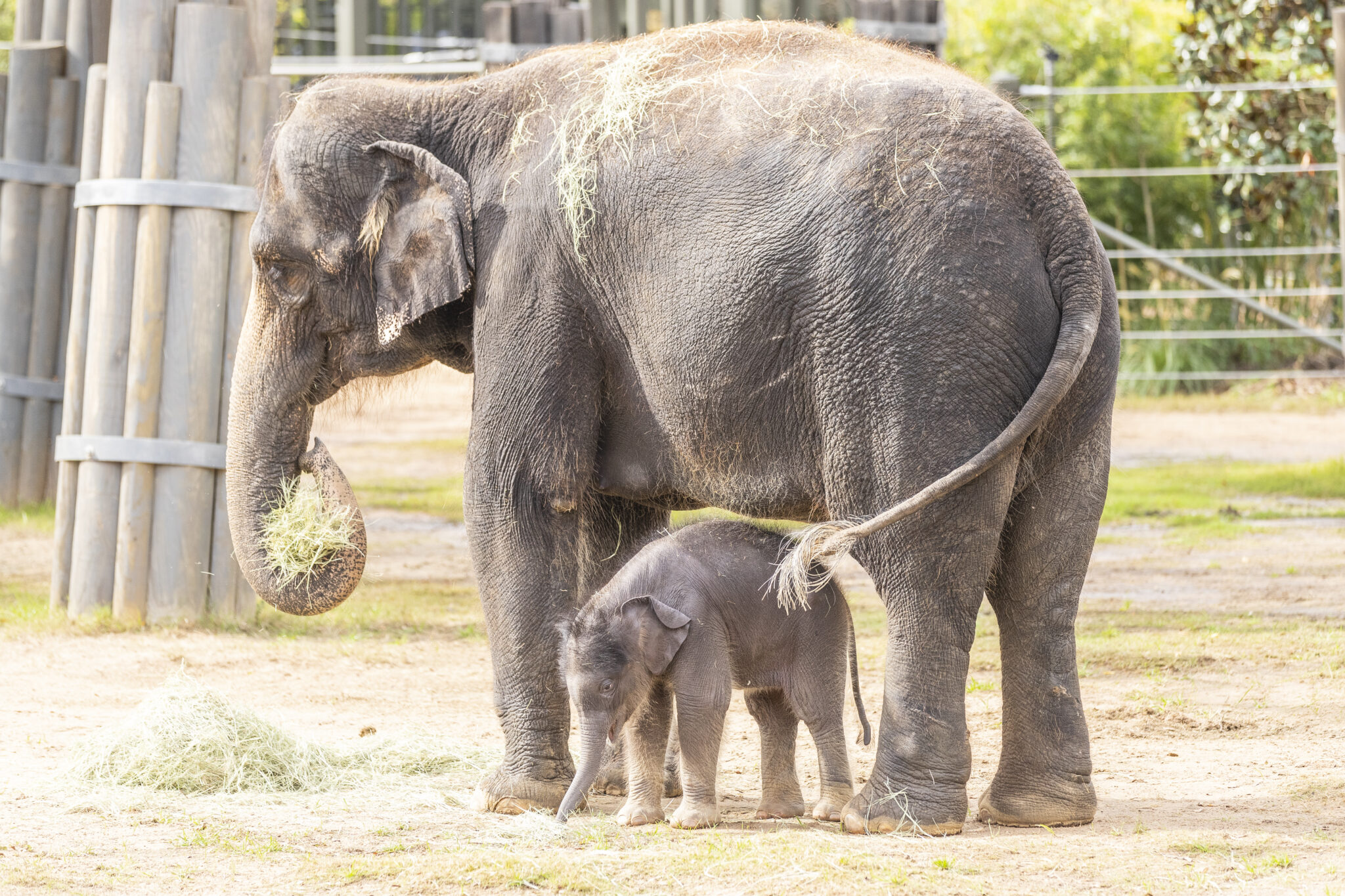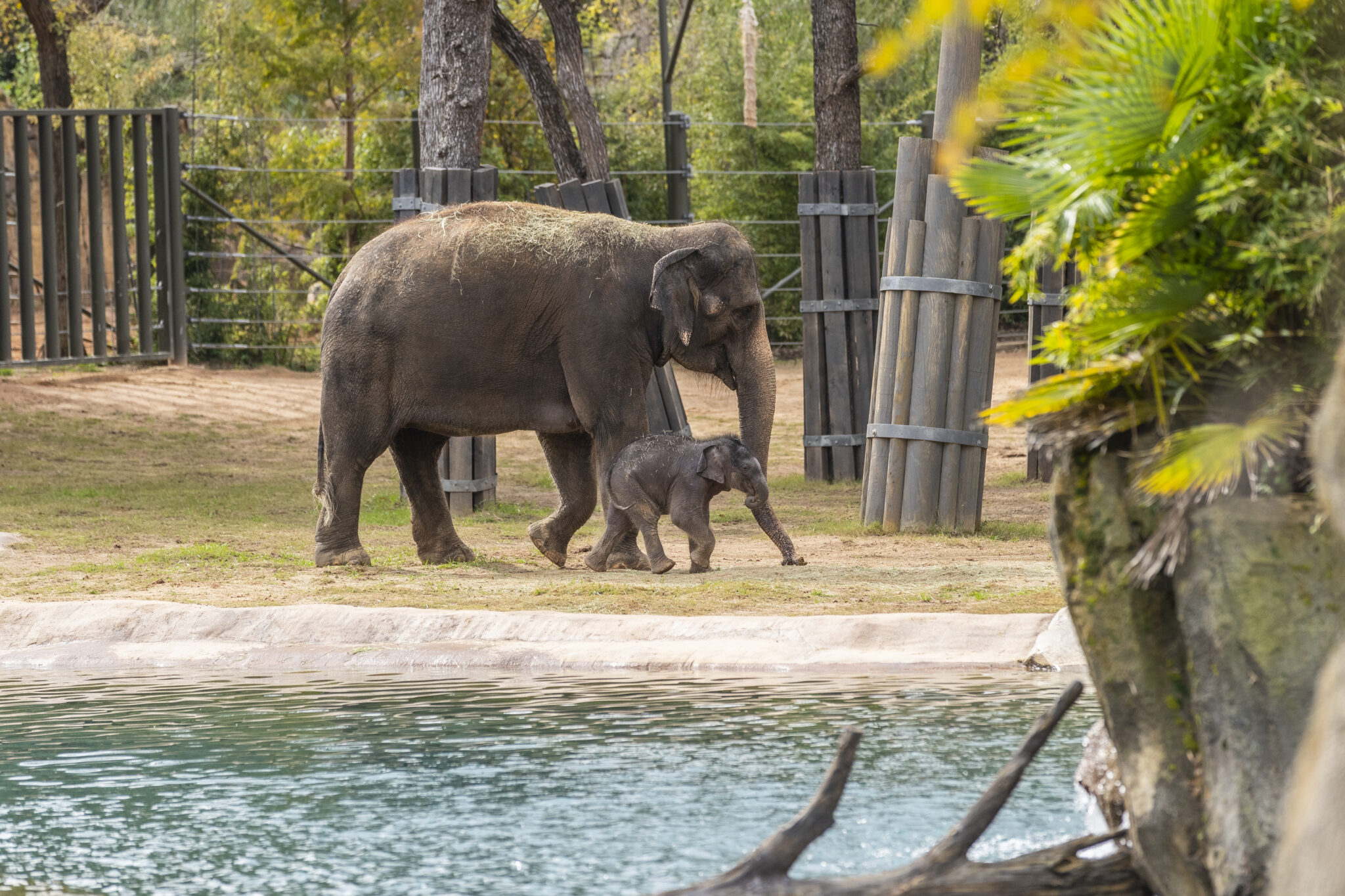Fort Worth Zoo officials on Nov. 9 announced a new baby. Quite a baby at 37-inchs-tall, 255-pounds. The male Asian elephant calf called Brazos was born at 11:35 p.m. on Oct. 21, 2021. He is the fourth calf born at the Fort Worth Zoo following his mother Bluebonnet in 1998 and his aunt Belle and half-brother Bowie, both born in 2013.
This is Bluebonnet’s second calf. Bluebonnet, now 22 years old, was carefully monitored throughout her pregnancy. As part of her prenatal care, she had weekly blood tests to monitor progesterone levels, regular physical examinations, and sonograms. The calf’s father, Romeo, is 28 years old and has lived here at the Fort Worth Zoo since 2015.
Both mother and calf are doing well, the Fort Worth Zoo says. Currently, they are spending time bonding in behind-the-scenes areas, and the calf is gaining about two pounds a day. The initial bonding between an elephant calf, its mother, and family unit is vital to a successful rearing. Other members of the herd are beginning to meet their newest family member. As the calf gets acclimated to his surroundings and continues to grow stronger, there will be limited hours for public viewing of baby Brazos for the next several weeks. The cooler temperatures and winter weather will also dictate his outdoor schedule.
Here’s the Ansestry.com 411 on Brazos’ family tree: The family tree is flourishing with three generations of elephants at the Fort Worth Zoo, which mimics how herds are established in the wild. Rasha’s birth of Bluebonnet in 1998 marked the first elephant born at the Fort Worth Zoo. In 2013, Rasha delivered Belle, making Bluebonnet a sister, and Bluebonnet delivered Bowie, making Rasha a grandmother and Belle an aunt. Bowie is now a big (half-)brother to Bluebonnet’s new calf, Brazos. In total, the Zoo is home to eight Asian elephants: four females and four males.
Since establishing its elephant breeding program in 1986, the Fort Worth Zoo has become an international leader in elephant conservation. Zoo Executive Director Michael Fouraker served as founding president of the International Elephant Foundation (IEF) and has served on the organization’s board of directors since its inception. In April, the Zoo opened its newest habitat, Elephant Springs, which includes multiple green spaces, a variety of substrates, and a multitude watering holes for both Asian elephants and greater one-horned rhino to roam. This $32 million, state-of-the-art habitat further solidifies the Zoo’s commitment to elephant conservation and management here at home. Listed as endangered since 1976 by U.S. Fish & Wildlife Service, Asian elephant populations continue to decline for this species and if the trend continues, zoos are going to be the only place that’s left for these animals.





